FutureWorks were excited to once again team up with Westworld VFX Supervisor Jay Worth to help translate William Gibson’s visionary novel The Peripheral for the screen.
The Amazon series was produced by Jonathan Nolan and Lisa Joy’s Kilter Films. The Peripheral’s 8 episodes incorporate a host of futuristic elements and blend multiple timelines, beginning with 2032 United States and London, circa 2100.
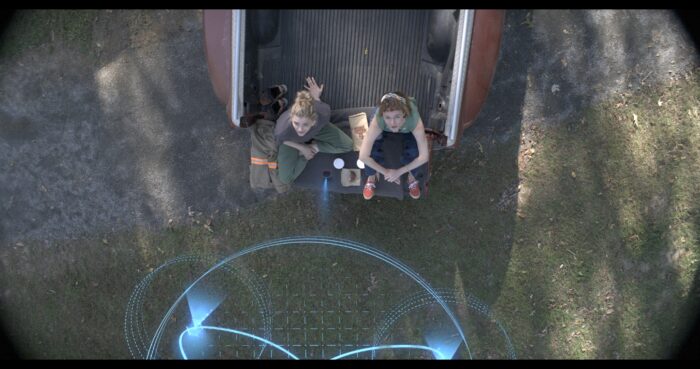
FutureWorks’ VFX supervisor Gouri Shankar led a 60-strong team of 2D and 3D artists at the studio in bringing the vision of The Peripheral’s directors and VFX team to life across approximately 260 shots in total. FutureWorks focused on creating content for the production’s LED Volume, incorporating futuristic elements to the show’s array of gadgets and screens and, most fundamentally, working to design and bring to life the invisibility (or ‘cloaking’) technology and scenes which features across the series.
Cloaking in, and cloaking out on The Peripheral
‘Invisibility’ on film is clearly not a new idea but does present a couple of eternal creative challenges.
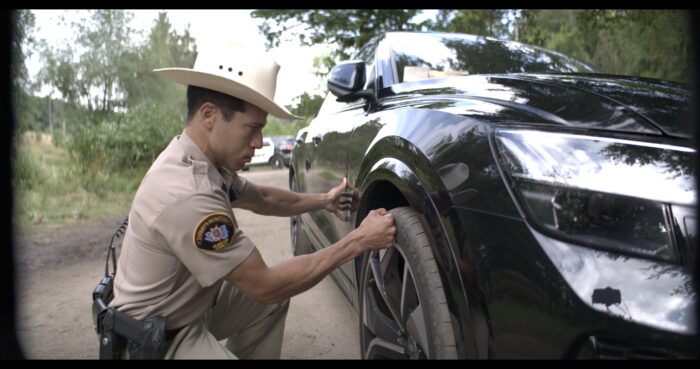
For example, how to communicate the presence of an object when it’s invisible, and how could and should invisibility manifest?
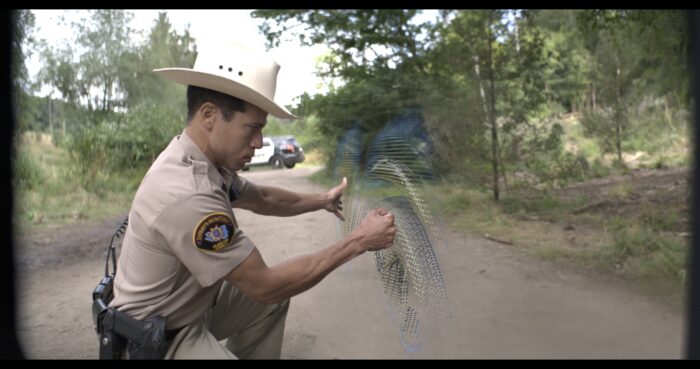
FutureWorks solved these challenges for The Peripheral, working closely with the series’ Production VFX Supervisor Jay Worth on the visual language and implementation of the invisibility scenes on the show.
A priority for Jay was to try and find as unique a look as possible for the invisibility in the series and to allude to the nature of the invisibility itself. In the case of The Peripheral, it’s future technology that makes ‘cloaking’ possible – and so part of FutureWorks’ brief was to incorporate a sense of that into the final visuals.
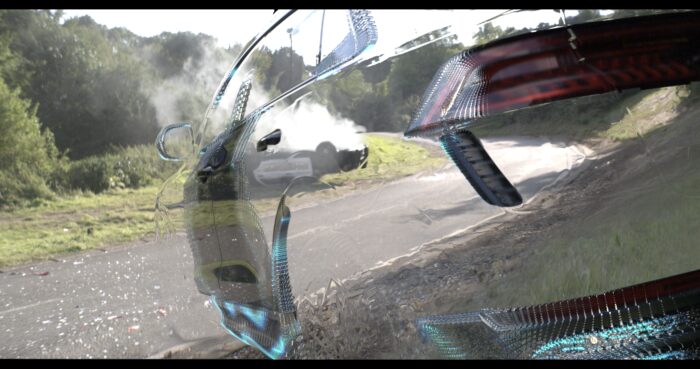
Jay provided FutureWorks with detailed references, including patterns and textures, to help inform the team about the kind of invisibility effect that he was looking for throughout the show. He also wanted to be able to give the audience a ‘sense’ of the cloaked objects being present, even when they are fully invisible. In the case of the cars with cloaking technology featured throughout the show, there were discussions about the different densities of the cars’ material properties; plastic, metal, glass – and if those might be affected by the cloaking technology in different ways. These kinds of directions helped Gouri and the team at FutureWorks work up some ideas and put together some tests to present back to Jay and the production team.
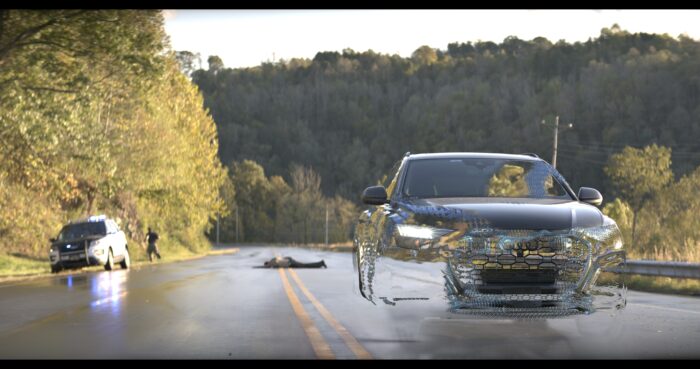
What you see in the series are the final agreed concepts in action. In the case of the cars, a ‘shimmering,’ similar to heat haze, appears along the car’s silhouette to indicate its presence. FutureWorks then used different layers in Houdini to enable different elements of the car to disappear or reappear. One layer for patterns and a separate one for tires, for example, with other layers combined to give a more fluid and merged effect.
Invisible impact
One of the most complicated scenes FutureWorks worked on was one in episode 5, which features a ‘cloaked’ SUV crashing into Deputy Sheriff Tommy’s vehicle. As the audience, we perhaps aren’t initially aware of what’s happening as Tommy’s vehicle is hit and tossed into the air. But the subsequent reappearance of a previously cloaked SUV ultimately leaves us in no doubt as to the cause of the accident.
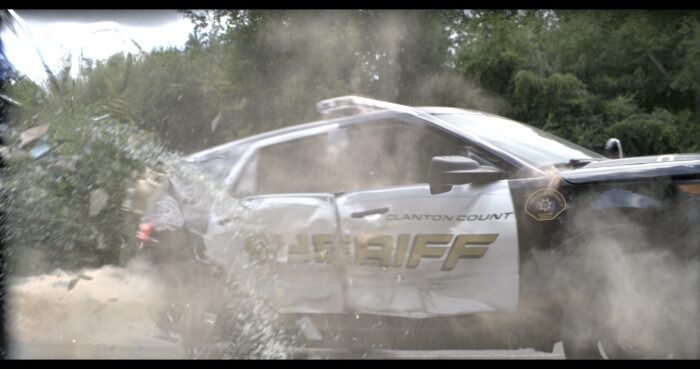
In fact, there are subtle signs before that as to the cause of the crash. In the frames leading up to impact, vigilant audience members may spot the telltale ‘heat shimmer’ denoting the presence of a cloaked car.
To help realize the scene, FutureWorks painted out the stunt rigging that was used to flip the car and roll it across a field on set, and also worked to add the damage to the police cruiser caused by the invisible SUV. This was achieved by FutureWorks’ 3D modeling team creating a crushed CG version of the vehicle’s side panels (from a scanned version of the car) which was then tracked to the real car as it was moving. Dust and debris were also added to lend the scene added realism, with FutureWorks 2D, 3D, paint, prep and matchmove teams all involved to varying degrees.
Mark Spatny, Visual Effects Supervisor for The Peripheral said:
“The Peripheral was my first project working with Futureworks, and I will absolutely be calling them on my next one. They really saved us by taking on challenges with short turnarounds that none of our other creative partners were able to accommodate and delivered some truly imaginative effects that became signature looks for the series. I couldn’t be happier with our partnership.”
About FutureWorks
Leading global content creators, studios and streaming networks rely on FutureWorks’ expert artists and technologists to deliver world-class services. FutureWorks provides clients with end-to-end film production services, from visual effects and picture & sound post, to the supply of high-precision cameras and lenses. With a dedicated team of over 300 talented artists, spread across multiple integrated facilities in India, FutureWorks is recognized as a trusted partner by platforms worldwide.










